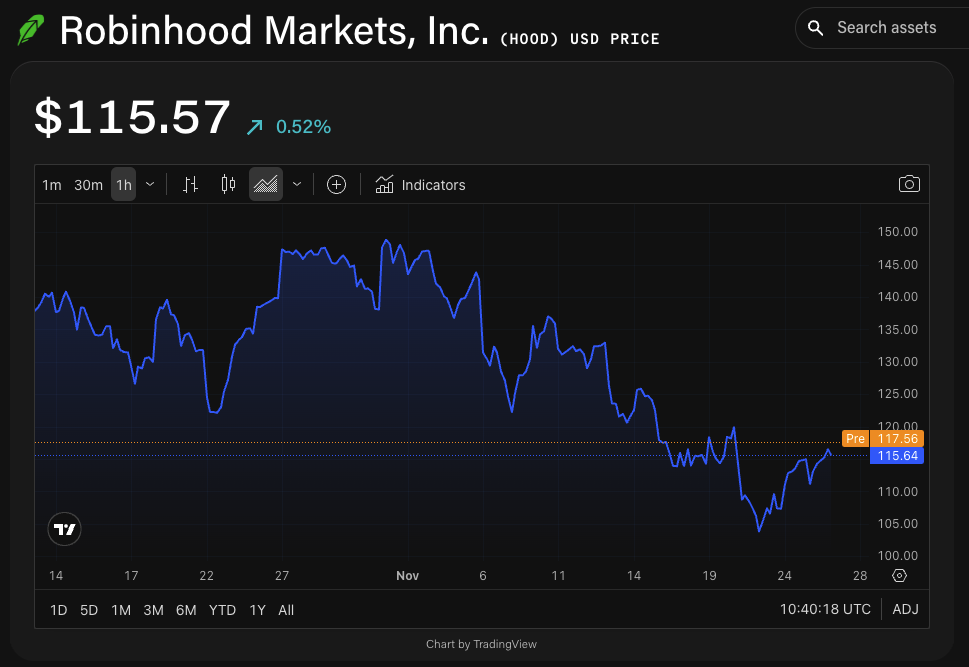Robinhood’s Strategic Move into Prediction Markets: A Comprehensive Overview
Robinhood is making significant strides in the burgeoning prediction markets arena, marking a new phase of growth that could reshape the competitive landscape. Through a joint venture with Susquehanna, Robinhood aims to establish a CFTC-regulated derivatives exchange, signaling its ambition to leverage existing market trends. This strategic move comes at a time when Robinhood is already a dominant player, accounting for over 50% of Kalshi’s market volumes. Analysts from Bernstein assert that Robinhood’s extension into this niche will enable it to capitalize on its distribution strengths and secure a larger share of the market’s revenue.
Expanding Market Presence
In recent communications, Robinhood announced that it will gain control over the joint venture and acquire MIAXdx, a CFTC-licensed Designated Contract Market. This is emblematic of Robinhood’s intent to not only be a distributor of market products but also to create its own prediction markets with added liquidity and infrastructure. The analysts at Bernstein noted that the prediction markets have emerged as Robinhood’s fastest-growing business line since its launch earlier this year. With over 9 billion contracts traded among 1 million users, Robinhood’s prediction markets are on track for an impressive annual run rate exceeding $300 million.
Exceptional Performance Metrics
The figures highlight Robinhood’s rapid ascension in the prediction markets sector. In Q3 alone, the platform processed an astounding 2.3 billion contracts, contributing $2.5 billion in volume in October, which accounted for 57% of Kalshi’s activity for that month. Bernstein analysts emphasize that Robinhood is not just relying on existing partnerships but is keen on supplementing Kalshi products with more event contracts directly. This proactive approach indicates a calculated effort to dominate the growing sector by enhancing its service offerings.
Competitive Landscape Shifts
Robinhood’s initiatives align with a broader competitive shift within the prediction markets landscape. Analysts predict that Coinbase will soon launch its own prediction market product, although specific details are still in the works. The leaked code from the Coinbase app suggests that prediction market and stock-trading modules are on the horizon, raising questions about whether Coinbase will partner with existing markets or venture into creating its own. This fluidity in the competitive landscape calls for vigilance from current main players like Kalshi and new entrants like Polymarket.
Rivals Regrouping
Polymarket, Kalshi’s primary competitor, is re-entering the U.S. market following an amended CFTC designation allowing it to offer its contracts via broker-dealers and futures commission merchants. After being barred from the U.S. market in 2022, Polymarket aims to forge new partnerships and regain its foothold. Despite being historically outpaced by Kalshi in terms of monthly volume, the latest developments could disrupt the current market dynamics dramatically.
Structural Market Division
Bernstein’s analysts note a structural split between liquidity platforms such as Kalshi and Polymarket, and distribution channels like retail brokers and crypto exchanges. Robinhood stands in a prime position with its 14 million active traders, which the analysts describe as a strong alignment in the demographic and product market fit for prediction markets. This advantage allows Robinhood to focus heavily on capturing revenue as the ecosystem continues to grow.
Future Outlook and Valuation
Bernstein maintains an optimistic outlook on Robinhood, reiterating their outperform rating with a price target set at $160—a potential upside of 38% from its recent closing price. The firm values Robinhood based on a 40x multiple of its estimated earnings for 2027. As the company continues to navigate the challenges and opportunities within the evolving prediction markets space, its strategic decisions will likely echo across the industry, shaping the future trajectories of emerging platforms.
In conclusion, Robinhood’s foray into prediction markets represents a strategic pivot that harnesses its extensive distribution capabilities. As competition heats up and new entrants emerge, the unfolding narrative will not only redefine Robinhood’s trajectory but may also set new benchmarks for the prediction markets ecosystem overall. With robust growth metrics and aggressive expansion strategies, Robinhood appears poised to lead in a dynamic and rapidly evolving industry, attracting the attention of investors and analysts alike.


